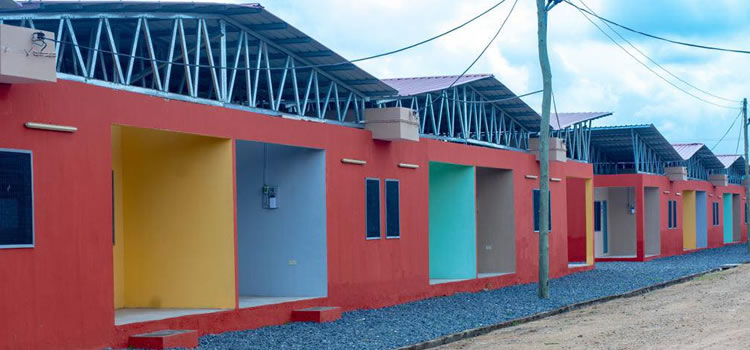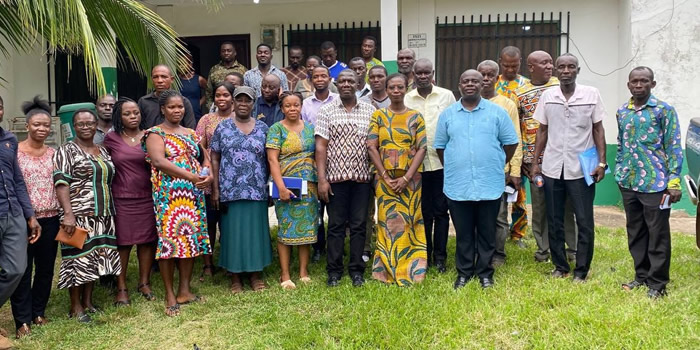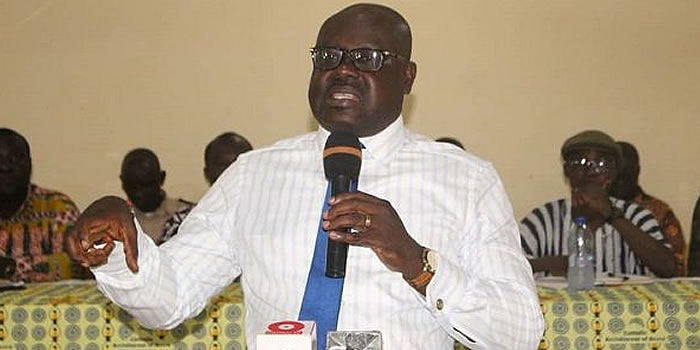

Goals & Objectives
District Development Goal, Projections, Objectives and Strategies
Introduction
This chapter discusses the District development goal, projections, objectives and strategies for implementation of activities. The goal was formulated to reflect on the needs and aspirations of the people of the Shai Osudoku District Assembly.
Developmental Focus
The development focus of the GPRS II, is to accelerate the growth of the economic base of the district to achieve a per capital income of $1000 by 2015. The general economic stability of the national macro economy achieved under the GPRS I (2003-2005) which emphasized poverty reduction, has resulted in a firm foundation being laid for the GPRS II where the focus is on accelerated growth and poverty reduction through growth inducing policies and programmes. While emphasizing on growth, the district is mindful of the recommendations of the Strategic Environmental Assessment, the Millennium Development Goals and Gender issues in all aspects of the decision making process.
National Goal
It is the aim of Government to achieve an accelerated and sustainable shared growth, poverty reduction and promotion of gender equity, protection and empowerment of the vulnerable and the excluded within a decentralized democratic environment.
District Goal
The focus of the District’s medium term development plan is to increase wealth and improve on the standard of living of the people in the District. This focus is in line with the National Goal set by the GPRS II. The district goal, objectives and strategies were identified after a series of stakeholder meetings, taking into account the existing potentials and opportunities in the district. It is therefore aimed at improving the quality of life of the people in the district, through equitable provision of services. This will be done by empowering the private sector, enhancing good governance and civic responsibilities, and developing the human resource base of the district.
District development projections and service requirements for 2006-2009
This section captures the projected district population for the plan period 2006-2009 and applies these in determining some social and economic services/ facilities required within the plan period. The result of these projections enabled stakeholders to formulate specific, measurable, achievable, realistic and timely objectives and strategies for implementation. The district population projection was based on the following assumptions:
- The district growth rate of 2.1% would not change significantly for the four-year plan period.
- The fertility rate of 5.6 would not change significantly for the four-year period.
- The rate of migration in the district remains the same.
- The life expectancy was assumed to remain at 59 years within the plan period.
District projected population
District’s Percentage Contribution to National = 15.4%
Shai Osudoku Percentage Contribution to Regional 3.3%
The total population of the district was projected to increase from 96,809 in 2000 to 107,405 in 2005 and 118,500 in 2010. This signifies a population growth rate of about 7% increases for the four-year plan period. Table 3.1 below shows the district’s population projections until 2010.
Development Programme
Introduction
This chapter discusses the broad District development programmes for implementation within the plan period. The broad programmes were adopted taking into consideration the district goal, objectives and strategies, the district priorities, issues from the district poverty mapping and pro-poor programming, and other programmes to protect the vulnerable and the excluded. These were captured in the logical framework. The projects to be implemented were subjected to sustainability analysis to assess their effects on the environment as well as measures to mitigate these effects. The chapter concludes with an indicative financial plan and projections for the plan period.
Development programmes/ projects
The development programmes for the district was formulated under the three pillars of the growth and poverty reduction (GPRS II). Programmes/ projects that involve the collaboration of districts are also discussed.
The programmes/ projects are as follows:
Private Sector Competitiveness
- Reclamation of 40 acres of farmland lost to sand winning annually
- Provision of irrigation facilities for all year farming
- Strengthen extension and veterinary services
- Promote fish farming (aquaculture) and supply of fish inputs
- Promote large scale farming (mango, pineapple, pepper, etc)
- Facilitation of the establishment of post-harvest infrastructure
- Expansion of educational infrastructure and services
- Expansion of health infrastructure and related services
- Increasing accessibility to the supply of electricity in the district
- Expansion of market infrastructure
- Increasing accessibility to provision of potable water and improved sanitation
- Expansion of feeder road infrastructure Improvement of existing tourist sites in the District
Human Resource Development
- Promotion of best teacher awards in the district
- Providing assistance to needy but brilliant students
- Supporting the non-formal education system
- Upgrading the knowledge of District Assembly/Decentralized staff and other agencies in computer literacy
- Providing in-service training in targeted areas for staff of District Assembly members, Decentralized departments and agencies
- Sponsor 100 selected teacher trainees/ SS Students annually
- Collaborate with the Ministry of Manpower Youth and Employment to implement the Youth in Employment Programme (YEP)
Good Governance and Civic Responsibility
- Promoting community sensitization activities
- Promote special programme for the vulnerable and excluded
- Providing support to the sub-district structures
- Strengthening the monitoring and evaluation of development projects/programmes
- Organizing general assembly, executive committee, sub-committee and other meetings of the District Assembly annually
- Provision of entrepreneurial skills and training in income generating activities
- Increasing access to community participation in decision making process
The development programmes/projects stated above are further discussed through the logical framework analysis as indicated.
Logical Framework for District Development Plan (2006-2009) Based on Three GPRS II Themes Overall District Goal: To Increase wealth and improve on the standard of living of the people in the District
Indicative Financial Plan
Introduction
This section of the plan examines the revenue and expenditure pattern of the district from 2002 to September 2006. It also shows the revenue projections for the district from 2006 to 2009. It reveals the major sources of revenue and the challenges that are posed to revenue mobilization and management.
District Assembly Revenue Mobilization
It is a fact that the capacity of a district to implement any meaningful development plan largely depends on its ability to mobilize revenue from both internal and external sources. Apart from the internally generated fund (IGF), grants which include funds from the District Assemblies Common Fund (DACF) including the MPs fund, HIPC Fund, GETFUND, GOG and Development Partners including DANIDA, JICA, DfID, World Vision Ghana (WVG) and other Non-Governmental Organization (NGOs) has flowed into the district for various development projects.
Although there have been increases in the total amount of revenue to the district since 2002, the potential of the district in mobilizing internal resources has not been fully harnessed due to several inhibitions in the areas of logistics especially in human resource at the sub-district level.
It can be deduced from the table above that both IGF and grants have increased over the period. The growth in IGF has however not been spectacular as desired. Apart from year 2003 when it grew by 57.5% that is, from 0797,300,000 to 01,255,780,819.42, the percentage growth had not crossed 13% until 2006 when it is expected to grow at a minimum of 50% over the 2005 level and thereafter at an average of 17% per annum within the plan period (2006-2009).The projections under rates appear to be unachievable however, it must be explained that the projections were based on a house-numbering exercise carried out in 2005 in Dodowa which identified a minimum of 1500 rateable properties. The exercise is to be continued in all other places after a planned revaluation of all properties by the Land Valuation Board in the district. Revenue from property rate is therefore expected to grow to the targeted levels.
Although the proportion of IGF to total revenue appears to be very insignificant, there has been tremendous growth in 2006 over the 2005 level due to increased vigilance by management in addressing the loopholes in revenue management. Two new vehicles were also procured in 2006 to increase effectiveness in revenue mobilization. By the end of September, 2006, IGF accounted for over 33% of the DACF allocated to the District in 2006 and over 83% of the target for the year was achieved.
It must be reiterated that in the year 2006, the total grants received at the end of September was 015,071,349,978.40 out of which HIPC receipts accounted for 66.3% that is, 09,989,956,767.29 which was channelled towards the upgrading of Ghanata Secondary School, as a model school for the district and DACF receipts accounted for 25% that is, 03,779,466,236.48 of total grants. The HIPC funds receipts between 2002 and September 2006 totalled 025,990,527,085.03 and were channelled into the following areas; as depicted.
The HIPC funds released to the district was spent on Ghanata Secondary School project, with most of these projects at their completion stages. Inflows to the district may therefore fall drastically in subsequent years within the plan period 2006-2009.
Development Priorities
Introduction
The summarized key development problems and gaps identified from the situation analysis of the district coupled with the pillars of the growth and poverty reduction strategy (GPRS II) enabled the district to identify the key priorities for accelerated development. This is in recognition of the fact that limited financial and human resource has hindered the implementation of most development plans in the district. In view of this fact, the stakeholders in collaboration with the planning task force ranked and identified the following goals as the key development priorities for accelerated growth and poverty reduction of the district. The development priorities identified under the 3 pillars of the GPRS II are as follows:
Priorities for Private Sector Competitiveness
- Improve agricultural and agro-based industrial development. This will also include other industries with raw material base in the district.
- Ensure clean, safe and healthy environment.
- Improve and increase access to socio-economic infrastructure and related technical services to stimulate private sector activities.
Priorities for Human Resource Development
- Strengthening the institutional capacity of the District Assembly.
- Develop the human resource base of the district by improving access to education, provision of teaching and learning materials and staff motivation to enable them give out their best.
Priorities for Good Governance and Civic Responsibility
- Enhance good governance by strengthening the sub-structures of the Assembly
- Improve the status of the vulnerable and excluded by consciously making efforts to involve them in the decision making process.
- Provide public education on civic responsibilities and good hygiene practices
- Provide relief to the paupers in the district
- Facilitate the development of Information Communication Technology (ICT) in the district.
The above mentioned priorities were refined by stakeholders through the analysis of the district Potentials, Opportunities, Constraints and Challenges (POCC) which enhanced the formulation of appropriate strategies for implementation. The result of the POCC analysis under the GPRS II is indicated.
Date Created : 11/24/2017 2:44:49 AM











 facebook
facebook
 twitter
twitter
 Youtube
Youtube
 +233 593 831 280
+233 593 831 280 0800 430 430
0800 430 430 GPS: GE-231-4383
GPS: GE-231-4383 info@ghanadistricts.com
info@ghanadistricts.com Box GP1044, Accra, Ghana
Box GP1044, Accra, Ghana